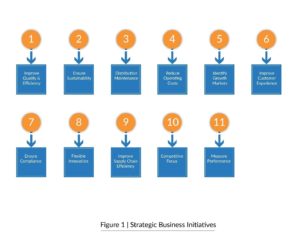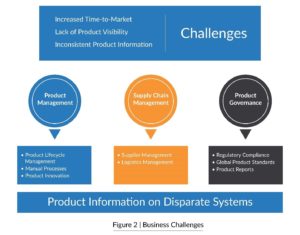Part one of this two-part series describes what the manufacturing sector is all about, business objectives within the manufacturing industry, key business challenges faced in this sector, and why PIM is needed to overcome these challenges.
An Overview
Manufacturing objectives must be aligned with an organization’s strategic business objectives. The following are the baseline manufacturing objectives that augment an organization’s competency, helping meet customer requirements.

Manufacturers produce tons of goods every day, all of which impact consumers either directly or indirectly. The manufacturers need to share product information with distributors and with direct retailers or digital commerce providers on the Internet. Hence, it is inherent that manufacturers’ decision-making processes are intensely data-driven. However, without a proper system in place, there are a few challenges which hinder the ability to make sound decisions.
Key Business Challenges
The following are typical business challenges the manufacturing industry faces, which build a business case for a dedicated PIM system.

Product Management
Increased Time-to-Market
The time taken to market products from the time of manufacturing increases due to the following reasons:
- Delayed data integration due to siloed product data received from disparate systems in heterogeneous environments
- Frequent product innovations to stay competitive
- Elaborate manual business processes
- Ineffective product information collaboration
Inconsistent Product Information
The manufacturing industry faces constant flux driven by persistent financial pressure and increasing customer demand for complex and affordable products. Hence, manufacturing companies have to create product information that is rich, accurate, and well-managed, and best fits the given context of a certain location or trading partner, or a prospective customer.
Suppliers in an organization’s ecosystem manage product information for their own purposes using their own codes and version systems. Multiple versions of product images and videos are managed by creative agencies with different naming conventions. All these factors contribute to inconsistent product information.
Supply Chain Management
The following are factors leading to issues in SCM:
- Multitude of systems to manage information about stores, warehouses, materials, products, vendors, partners, customers, and suppliers
- Questionable data integrity across omni-channel touch points
- Integration with multiple marketplaces and webstores
- Lack of timely notifications and remediation processes
- Poor visibility in tracking supplier performance, deliverables, cost-effectiveness, and spend analytics
- Lack of effective and real-time data syndication to partners, customers, suppliers, vendors and global data pools
- Spectrum-wide integration with Digital Asset Management tools
Product Governance

Kishalay Gangopadhyay
Senior Director – North America Operations, Mastech InfoTrellis




















